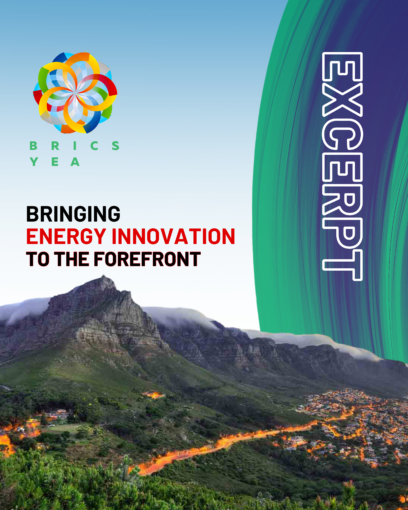25 June 2023
Bringing Energy Innovation To The Forefront
Today, no part of the world is untouched by energy or some form of power. The sources, however, have majorly been fossil fuels such as coal, crude, and natural gas. These fuels have run the world for a long time without many fingers pointed at them, but today the situation is different.
We are in a crisis where how we source and consume our energy has deteriorated the environment by polluting the air we breathe and the water we drink, thus, threatening the organisms we co-exist with. Thus, the concept of energy innovation is being brought out as a solution.
CONCEPTUALISING ENERGY INNOVATION
Energy innovation, as the term suggests, refers to the process of bringing change and evolution in energy sourcing techniques and product technology such that, in this context, it minimises the impact on the environment. The concept of energy innovation merges the economic relevance of “energy” and the technological aspect of “innovation”. In today’s context, there is a requirement for this concept to be brought to the forefront of saving the environment from further deterioration.
STAGES OF INNOVATION
Energy innovation takes place in five stages. The first is fundamental research, wherein any innovative ideas are brought into shape to be implemented later. This is usually done by collaboration between researchers, designers, manufacturers and users. The second step involves option creation and is also known as “proof of concept”, which entails a trial and error method to innovate the idea developed from the first step and observe the change in user response. Depending on the demand and attraction of customers for a particular option or model, developers can move to the step of demonstration. The presentation of the project and its nuances like the price, demand, target audience, etc., is laid out to investors and customers. The fourth stage is called early adoption, wherein the primary customers act like “adopters”. They give valuable feedback regarding usability and improvement in the design. The final stage is large-scale take-up, which means releasing the technology into the market. This, however, includes constant improvement and innovation in the technology of the product even after sales start. It is empirically evident that products that evolve and innovate with the needs of the market have more sustainable demand.
STAKEHOLDERS IN ENERGY
Since technology has been a requisite in peoples’ lives, it is important to encourage new research and development activities around the world for the larger benefit of all. The pandemic was a warning bell and, thankfully, the world paid heed to it. Governments have increased support for R&D as well as demonstration projects. Even private companies have started looking for innovative solutions in the production process and marketing techniques. Developers and small businesses have started adopting new technologies, thus, adapting to the current context. While the majority of consumer practices remain the same, awareness has been generated among people about the disastrous effects of climate change and the desire for sustainable products has seen an increase in some areas. The governments, private establishments, consumers and developers are the key stakeholders, while research groups, local communities, climate activists, and other such entities form an important part of the energy innovation process.
INNOVATIVE TECHNOLOGIES ON THE RISE
This decade has experienced splendid, multi-stakeholder involvement in the development of fresh and innovative energy technologies. According to the available data, new tech like sodium-ion batteries for Electric Vehicles (EV), industry-scale production of electrolytic hydrogen-based reduction of iron, direct extraction of lithium from brine, integrated heat pumps in buildings, and the development of Small Modular Reactors (SMRs) for small-scale production of nuclear energy will finally reach the market uptake stage by 2030.
Carbon Capture, Utilisation and Storage (CCUS) techniques have come to be adopted by large firms and even younger establishments nowadays, and their demand is expected to rise in future. It is important to establish a measurement system for analysing the carbon footprint of any producer or household and rightly assess the measures that can be used to reduce it. This is the main reason for the increasing popularity and importance of the CCUS systems.
INNOVATION DIVIDE
Governments and international organisations have been directly funding and investing in newer technologies. However, on observing data, a geo-economical contrast between spending on clean energy innovation becomes apparent. North America, Europe and China have the highest aggregated expenditure on these above-mentioned technologies as of 2021, and it has only been increasing.
While most governments in the West have increased funds and incentives, majorly for hydrogen, CCUS and energy storage, the rest of the world is lagging. Developed economies like the United States of America, Canada, China, Japan, and countries of the European Union have incentivised and marketed the largest proportion of energy innovation in the last few years. Most developing countries, however, have cumulatively shown less investment in research and development in this area. This could be due to two main reasons; one, the lack of capital and funding, and two, a relatively lesser contribution to pollution activities.
INNOVATING NET ZERO
As the COP26 concluded and climate activism increased, the stakeholders did start acting responsibly and this has resulted in a greater hope for the actual attainment of Net Zero carbon emissions by 2050. Low carbon mobility, energy storage and battery along with hydrogen and fuel cell are set to receive the largest boost in the coming years, especially due to the increase of venture capitalism in these areas. Internationally, compensatory funding from and sharing of more efficient innovations of developed countries should be implemented following the carbon footprint measurement of countries to hold them accountable.
While private organisations have expressed a desire to shift to more modern, cleaner processes of energy production and utilisation, it is now for the governments to set a policy framework that effectively guides their path to sustainability. More focus and impetus need to be on integrating the up-and-coming technologies in the supply chain. This can be done by the government while taking up initial investment risk to stabilise a particular set-up and attract private investment once they are convinced. Once these technologies have been innovated and marketed, a constant evaluation system to identify gaps and public-private dialogue to fill them is the need of the hour.
CONCLUSION
It is these practices and newer discoveries that will be effective in achieving the Net Zero by 2050 goal. Hence, bringing energy innovation to the forefront is not a mere option but a necessity. Seeing that the problem is multilateral, it is important that such country groupings deliberate on solutions like these. The BRICS Youth Energy Summit this year in South Africa is an added benefit as it puts energy innovation at the helm of things, making it one of the primary drivers of change. The BRICS group coming together to assess progress and chart the path forward is something that would encourage a collective and equitable approach, thus providing a platform for leaders to tackle the situation together.
Author: Anusha Shrivastavaa, The Geostrata
Share news


